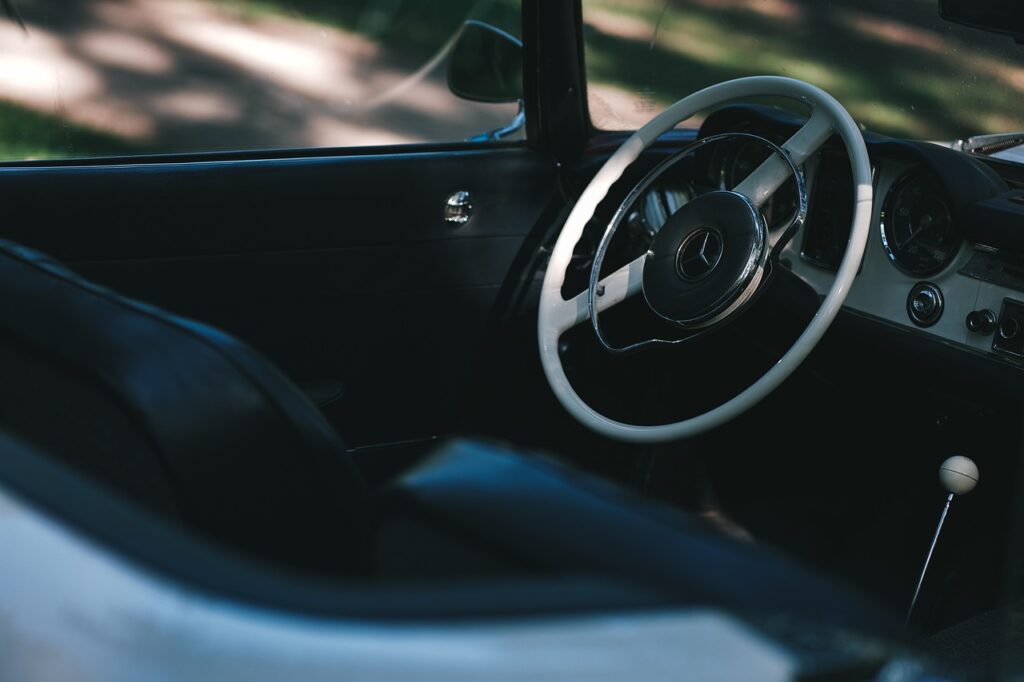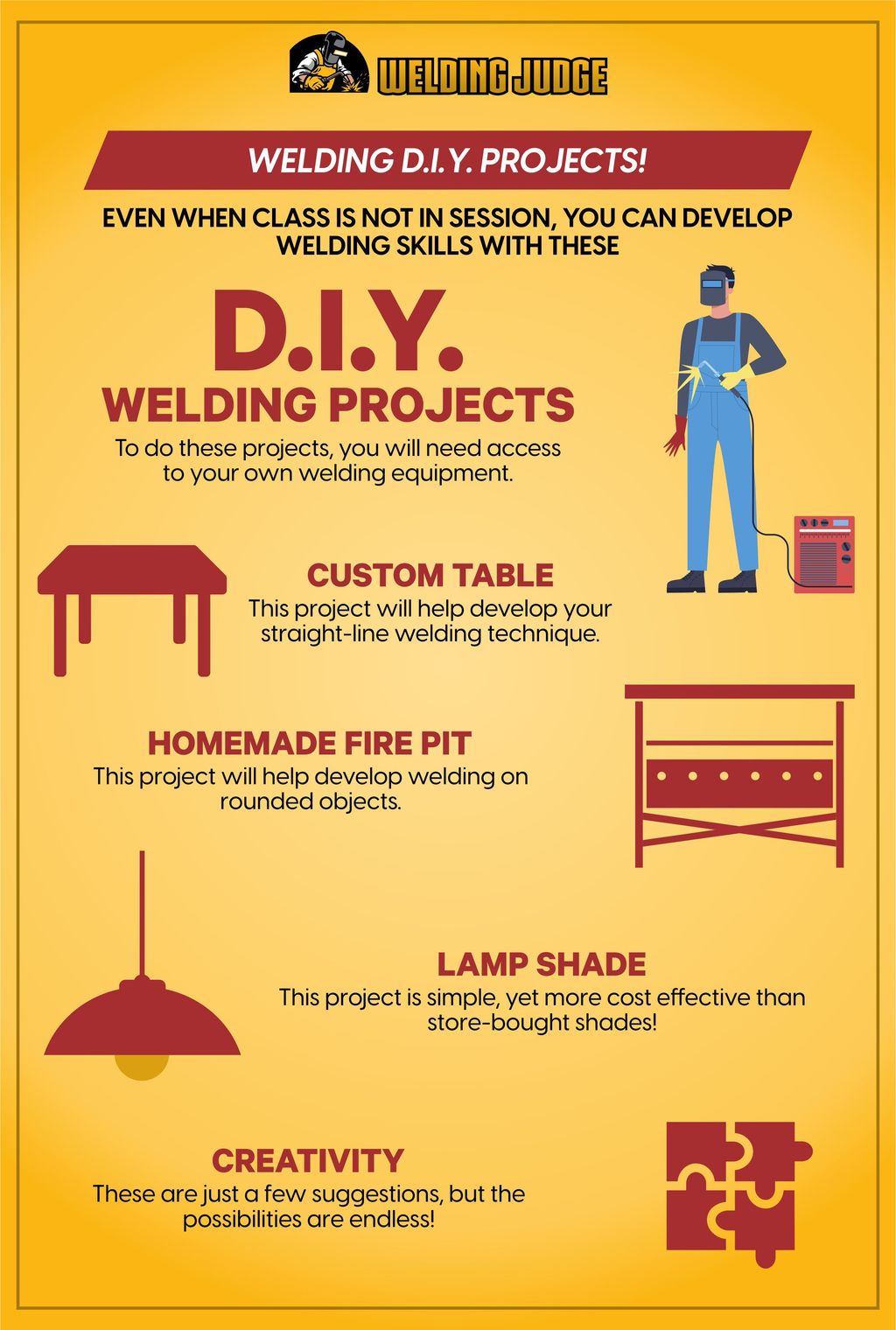The question of which American car brand holds the title of “oldest” is far more complex than a simple glance at a founding date might suggest. It’s a journey into the heart of early industrial innovation, a story filled with ambitious visionaries, groundbreaking engineering, and the relentless pursuit of speed, luxury, and accessibility. Delving into this rich history reveals that “oldest” can mean different things – the first to build a car, the first to survive, or the first to popularize a specific type of vehicle.
American car culture, a phenomenon that has profoundly shaped the nation’s identity and infrastructure, truly began in the late 19th century. From rudimentary motor wagons to sophisticated luxury machines, these early manufacturers laid the groundwork for an industry that would eventually dominate the global stage. Understanding their origins is not just an exercise in historical trivia; it’s an appreciation of the ingenuity and entrepreneurial spirit that defined an era of rapid technological advancement.
In this comprehensive exploration, we embark on a detailed journey through the formative years of American automotive manufacturing. We will meticulously examine the pioneering efforts of the very first companies, highlight those that have remarkably endured the test of time, and celebrate the early innovators whose contributions, though sometimes short-lived, left an indelible mark on the industry. Prepare to discover the true lineage of America’s automotive heritage.
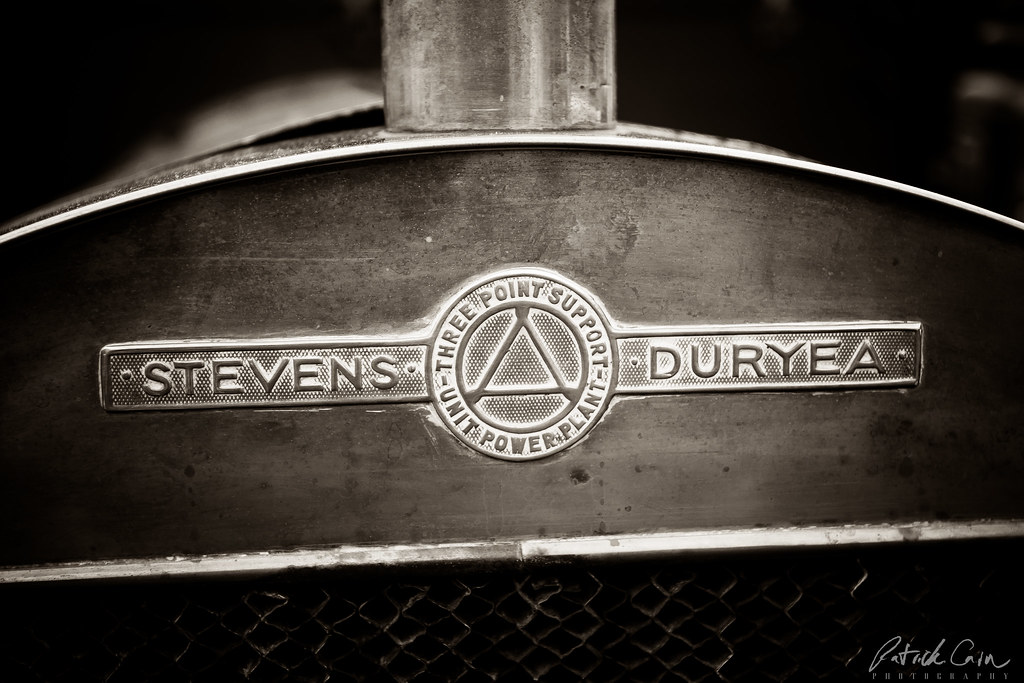
1. **Duryea Motor Wagon Company: The Genesis of American Motoring**
The narrative of American car culture unequivocally begins with the Duryea Motor Wagon Company. Established in 1896 in Springfield, Massachusetts, by the visionary brothers Charles and Frank Duryea, this enterprise holds the distinguished honor of being the very first American car manufacturer. Their pioneering efforts marked the pivotal moment when the concept of the self-propelled vehicle transitioned from European novelty to an American industrial pursuit.
The Duryea brothers’ endeavors were not without challenges, but their persistence led to the creation of rudimentary yet functional gasoline-powered vehicles. While the company’s lifespan was relatively brief, ultimately ceasing operations in 1917, its foundational role is undeniable. It laid the initial conceptual and practical groundwork for all subsequent American automotive ventures, setting a precedent for what would become one of the nation’s most impactful industries.
The Duryea Motor Wagon Company’s legacy is etched into the annals of American industrial history, symbolizing the very dawn of an era. Though their cars are long gone from the roads, the spirit of innovation they ignited continues to fuel the automotive world. Their initial spark demonstrated the viability of the automobile as a practical mode of transport, paving the way for the hundreds of carmakers that would follow in their tracks, each striving to refine and revolutionize personal mobility.
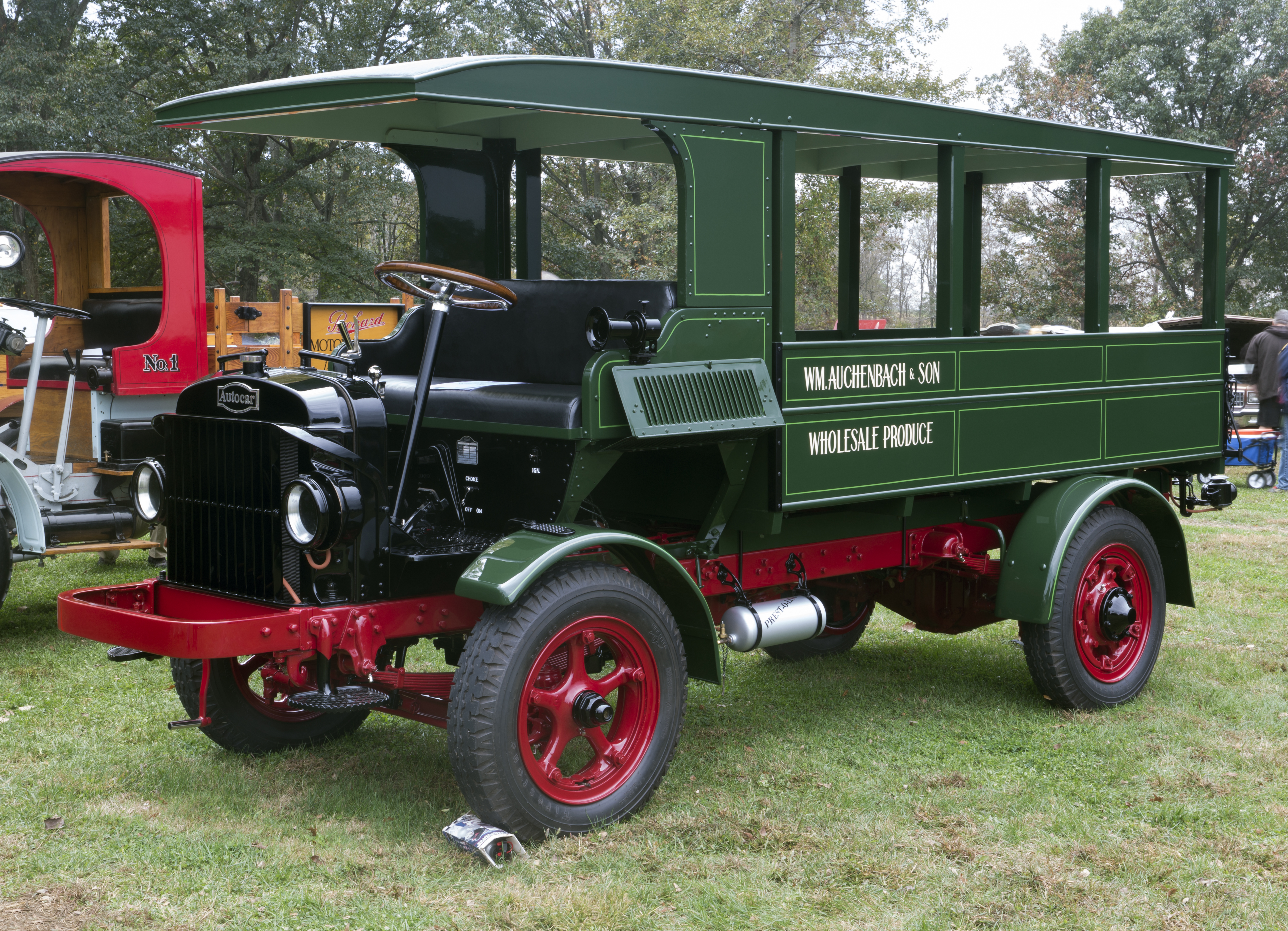
2. **Autocar Company: The Enduring Pioneer of American Vehicles**
Emerging in the same pivotal year as Oldsmobile, 1897, the Autocar Company carries a unique distinction as the oldest *surviving vehicle company* in the United States. Its story began when Louis Semple Clarke, a true innovator, completed his first three-wheeled, one-cylinder gas-powered buggy, Autocar No. 1, in 1897. Realizing the immense potential of the automobile, Clarke, along with his brothers John and James, father Charles, and friend William Morgan, founded the Pittsburgh Motor Vehicle Company that same year.
The team quickly progressed, building a four-wheeled vehicle, the Pittsburgher, in 1898. Their ambition soon outgrew their Pittsburgh facility, leading to a strategic relocation to Ardmore, Pennsylvania, in 1899, where the business was fittingly renamed the Autocar Company. This move marked a significant step in solidifying their production capabilities and setting the stage for future innovations.
Beyond passenger cars, Autocar made history by building the first motorized truck in the United States in 1899. This early pivot towards commercial vehicles proved prescient, as by 1907, the company employed over 1,000 people, producing a diverse range of vehicles. Autocar’s engineers were at the forefront of automotive design, developing critical innovations such as the first left-hand drive vehicle, the first circulating oil system, and the first porcelain-insulated spark plug, the rights to which were later acquired by AC Champion.
Despite their early success with cars, the burgeoning competition in the passenger car market led Autocar to strategically focus on a niche: commercial vehicles. By 1911, the company exclusively produced trucks, delivery vans, and tankers. This specialization allowed them to lead the market in severe-duty truck production throughout the 1920s and 30s, and they played a crucial role in WWII, supplying over 37,000 armored vehicles to the Allied efforts. Today, after changing hands several times, Autocar is headquartered in Indiana and continues its legacy of manufacturing severe-duty vehicles, including mobile cranes, concrete pumpers, and refuse trucks, a testament to its enduring adaptability and pioneering spirit.
Car Model Information: 2024 Volkswagen Tiguan 2.0T SE 4MOTION
Logo: AutocarLogo.png
Name: Autocar Company Inc.
Industry: Commercial vehicles
Type: Private company
Foundation: Pittsburgh, Pennsylvania
LocationCity: Birmingham, Alabama
LocationCountry: United States
KeyPeople: Andrew Taitz (chairman),James (Jimmy) Jonhson (president)
Products: Shunt truck
Homepage: autocartruck.com
Categories: 1897 establishments in Indiana, All articles with vague or ambiguous time, American companies established in 1897, Articles with short description, Brass Era vehicles
Summary: The Autocar Company is an American specialist manufacturer of severe-duty, Class 7 and Class 8 vocational trucks, with its headquarters in Birmingham, Alabama. Started in Pittsburgh, Pennsylvania, in October 1897 as a manufacturer of early Brass Era automobiles, and trucks from 1899, Autocar is the oldest surviving motor vehicle brand in the Western Hemisphere.
Their last cars of their own manufactures were produced in 1911; after that the company continued as a maker of severe-duty trucks. The Autocar Company was taken over 42 years later, in 1953, by White Motor Corporation (established 1900), which made Autocar their top-of-the-line brand for continuing producing heavy-duty industrial trucks. White Motors was in turn taken over 28 years later by Volvo Trucks of Sweden in 1981, with Autocar continuing as a separate division. In 2001, Autocar was acquired by GVW Group, LLC, which revived Autocar as an independent company. Autocar now builds four models of custom-engineered heavy-duty trucks and has regained leading positions in several vocational segments.
Get more information about: Autocar Company
Buying a high-performing used car >>>
Brand: Autocar Model: No. 1
Price: $26,995 Mileage: 7,250 mi.
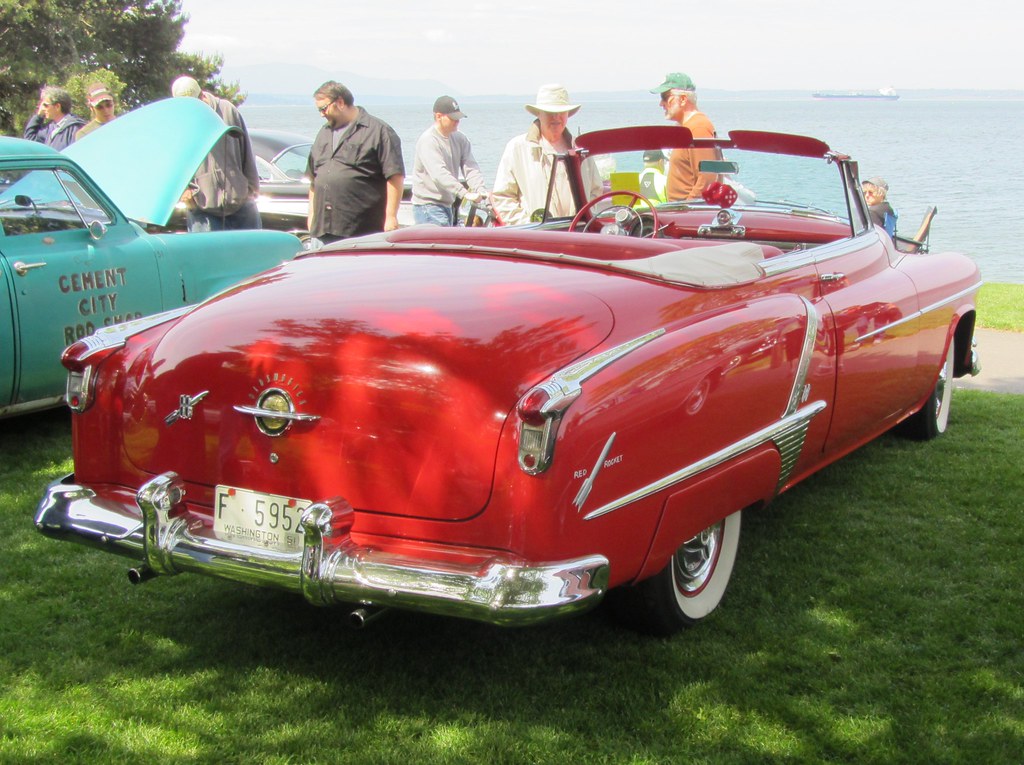
3. **Oldsmobile: The Futurist’s Favorite, A Legacy of Innovation**
Hot on the heels of the Duryea brothers, Oldsmobile appeared in 1897, established by Ransom E. Olds as the Olds Motor Vehicle Company. While not the absolute first, Oldsmobile quickly earned a reputation as a trailblazer, pioneering many advancements that would become industry standards. Its commitment to innovation saw it introduce the assembly line even before Henry Ford famously adopted it, fundamentally transforming how cars were manufactured and making them more accessible to the burgeoning American middle class.
Perhaps Oldsmobile’s most iconic early contribution was the 1901 Curved Dash, which holds the distinction of being the first mass-produced car. This affordable and reliable vehicle played a crucial role in popularizing automobiles among average Americans, shifting perceptions from a luxury item to a practical mode of transport. Later in its history, models like the Rocket 88 became cultural icons, embodying a blend of performance and distinctive styling that resonated deeply with the public.
Despite its long history of innovation and its significant impact on American automotive culture, Oldsmobile eventually succumbed to the pressures of maintaining a distinct identity within General Motors’ vast portfolio. The brand, once a symbol of progress and forward-thinking design, struggled to differentiate itself from its GM siblings in an increasingly crowded market. After a storied 107-year run, Oldsmobile was regrettably discontinued in 2004, marking the end of an era for one of America’s truly foundational car brands, though its impact on mass production and engine performance remains undeniable.

4. **Buick: The Oldest Surviving American Passenger Car Brand**
Buick’s journey began in 1899 as the Buick Auto-Vim and Power Company, founded by the Scottish-American inventor David Dunbar Buick. Initially, Buick’s primary interest lay in developing internal combustion engines rather than complete automobiles. However, a crucial pivot occurred in 1903 when the company’s focus shifted decisively towards car manufacturing, and its name was officially changed to Buick Motor Company, with series production commencing in 1904.
The early days of Buick were marked by financial transitions. Benjamin Briscoe, a friend who initially bankrolled the brand, eventually sold his stake to James H. Whiting. Whiting, facing his own difficulties, then handed control of the nascent company to the legendary William Crapo “Billy” Durant in 1904. Durant, a brilliant automotive entrepreneur, recognized Buick’s immense potential and, just four years later, leveraged it as a cornerstone in the formation of General Motors, bringing several other carmakers together under one umbrella.
Remarkably, more than a century after its inception, Buick is still going strong, making it the oldest *surviving* American car brand. It continues to operate as a GM brand, primarily selling passenger vehicles. While its illustrious history boasts iconic models such as the Buick Skylark, GNX, GSX, and Riviera, Buick’s contemporary U.S. lineup has adapted significantly to market demands. In recent years, it has transitioned entirely to crossover SUVs, discontinuing traditional car models like the Regal and LaCrosse after the 2019 model year.
Today, the brand offers a range of popular crossovers, including the entry-level Buick Envista, a SlashGear Editor’s Choice, with a suggested pricing starting at $25,195 for the Preferred grade. The current lineup also features the Buick Encore GX, the Buick Envision, and the comfortable, uncomplicated Buick Enclave, another SlashGear Editor’s Choice, which stands as the most expensive Buick on sale in America, starting at $46,595. Buick’s longevity is a testament to its adaptability and enduring appeal within the American automotive landscape.
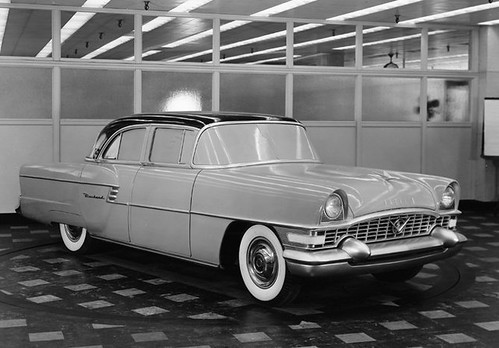
5. **Packard: A Symbol of American Luxury and Engineering Prowess**
If the measure of automotive prestige in the early 20th century was the ability to turn heads and inspire awe, then Packard stood preeminent. Founded in 1899, the brand rapidly ascended to the pinnacle of American luxury, establishing a formidable reputation that allowed its vehicles to rival even the esteemed Rolls-Royce. Packard cars were not merely transportation; they were meticulously crafted statements of opulence, technological sophistication, and unparalleled quality.
Packard’s unwavering commitment to excellence was famously encapsulated in its slogan, “Ask the man who owns one.” This tagline eloquently underscored the brand’s confidence in customer satisfaction and relied on powerful word-of-mouth endorsements over overt flashy advertising. Each vehicle was a marvel of engineering, featuring robust engines, sumptuously appointed interiors, and an attention to detail that bordered on artistry, cementing Packard’s status as a benchmark for automotive craftsmanship.
However, even a brand as revered as Packard could not withstand the tides of changing markets. Following World War II, the company struggled to adapt to evolving consumer preferences and the mass-production efficiency of its competitors. A desperate merger with Studebaker in 1954, an attempt to pool resources and revitalize both brands, ultimately proved insufficient. By 1958, the illustrious Packard name faded from the automotive scene, yet its vehicles remain celebrated by enthusiasts as engineering marvels that defined American luxury during their glorious heyday.
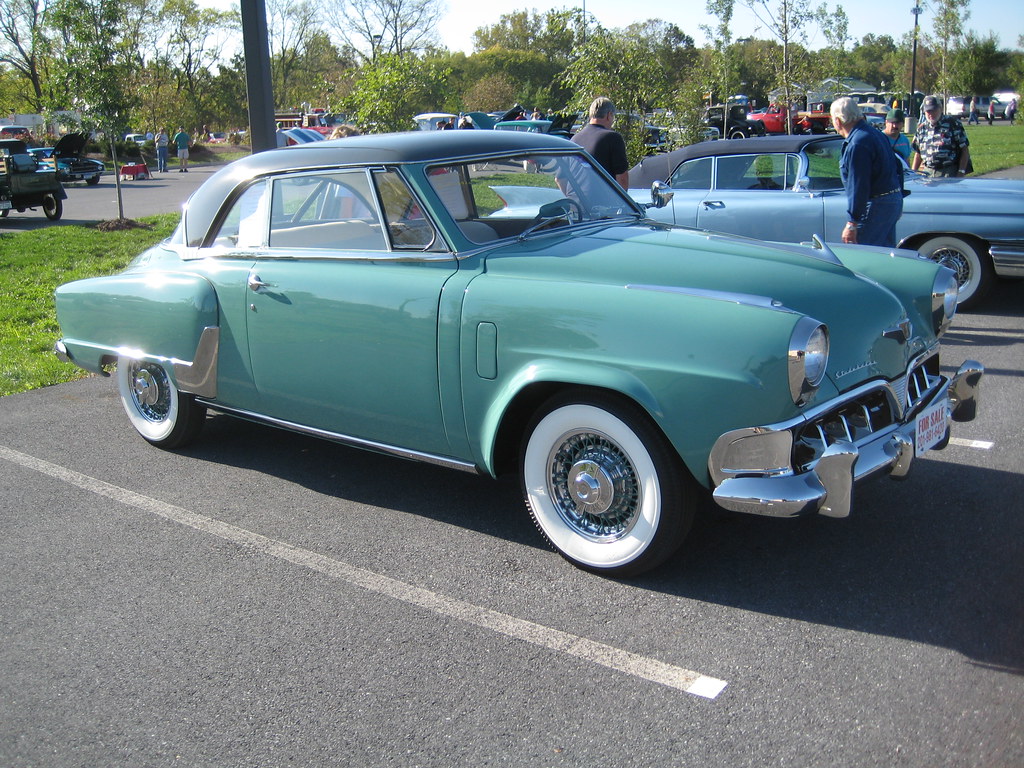
6. **Studebaker: The Wagon Maker That Became a Car Pioneer**
Studebaker’s history is a remarkable testament to adaptability, evolving from a leading wagon manufacturer in the mid-19th century to a significant player in the early automobile industry. The company’s deep roots in transportation are undeniable, as it famously supplied vehicles to pioneers embarking on westward journeys and even to the Union Army during the American Civil War, as documented by the Studebaker Museum. This extensive heritage naturally paved the way for its transition into the burgeoning automotive sector.
By the early 20th century, Studebaker was producing innovative and well-regarded vehicles. Among its most iconic creations was the Studebaker President, a model that became synonymous with luxury and performance in its time, showcasing the brand’s ability to compete with established names. Their marketing campaigns consistently highlighted the quality and durability of their products, often featuring slogans like “Built to Last,” which resonated with consumers seeking reliability and longevity in their automotive investments.
The post-World War II years represented a particularly vibrant period for Studebaker, as the company introduced sleek, aerodynamic designs that boldly differentiated its offerings from the more conventional, boxy competitors prevalent in the market. Models such as the bullet-nose Champion became instantly recognizable and cultivated a strong, loyal fanbase. Despite its innovative spirit and a dedicated following, Studebaker ultimately faced insurmountable challenges in competing with the immense scale and financial might of the “Big Three” automakers—Ford, General Motors, and Chrysler—and consequently ceased operations in the 1960s. Nevertheless, its profound influence persists, especially among classic car enthusiasts who cherish the unique design and engineering prowess of Studebaker vehicles.

7. **Cadillac: From Humble Beginnings to Luxury Icon**
The esteemed Cadillac brand, a perennial symbol of American luxury, traces its origins to 1902. Interestingly, its very existence is intertwined with the early entrepreneurial ventures of Henry Ford. In 1901, Ford founded the Henry Ford Company, his second attempt at establishing an automobile manufacturer. However, disagreements with financial backers Lemuel Bowen and William Murphy led to Ford’s departure, taking his name and vision with him.
Left with an abandoned factory, Murphy and Bowen enlisted the expertise of Henry Leland to appraise the equipment for liquidation. Leland, a meticulous engineer and manufacturing guru, saw not an abandoned factory, but an opportunity. He skillfully convinced the financiers to continue the manufacturing business, believing in the potential for a new luxury automobile. The group consequently renamed the company Cadillac in 1902, honoring Antoine de la Mothe Cadillac, the founder of Detroit.
Cadillac quickly established itself as a purveyor of high-quality, precision-engineered luxury vehicles. Its reputation for excellence garnered significant recognition, including being the first American car company to win the Royal Automobile Club of the United Kingdom’s prestigious Dewar Trophy in 1908, a feat it repeated in 1912. This early acclaim solidified its position in the luxury segment, leading to its acquisition by General Motors in 1909. Under GM, Cadillac continued its legacy of innovation and luxury, securing five Motor Trend Car of the Year awards over its illustrious history, and it remains a cornerstone of American automotive prestige to this day.
Our journey through America’s automotive lineage continues, now delving into brands that, while perhaps not holding the absolute “oldest” titles, left an indelible mark through their innovative spirit, unique design philosophies, and often daring engineering. These are the companies that challenged norms, carved out niches, and contributed significantly to the tapestry of American car culture, paving the way for advancements that still resonate today. Their stories are a testament to relentless ingenuity in a fiercely competitive industry.
This segment will explore the often-overlooked pioneers, from those who championed the compact car to the bold innovators of front-wheel-drive technology, culminating with a look at the brand that embodies America’s patriotic spirit. Each of these manufacturers, in their own right, pushed boundaries and redefined possibilities, adding layers of depth to the narrative of how American automobiles evolved beyond their foundational years.
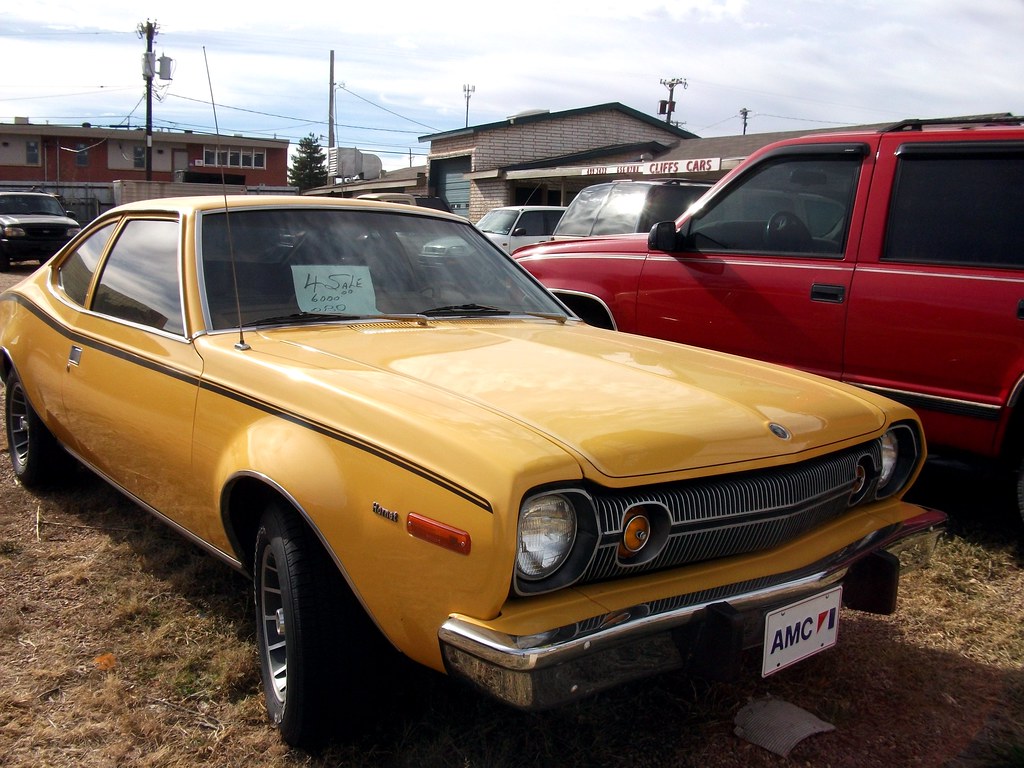
8. **AMC (American Motors Corporation): The Underdog Innovator**
Born from a strategic merger in 1954 between the struggling Nash-Kelvinator and Hudson, American Motors Corporation (AMC) faced an immediate uphill battle against the formidable “Big Three” automakers. Rather than attempting to out-muscle its larger competitors, AMC shrewdly leveraged its smaller size as an advantage, carving out niche markets with innovative and often unconventional offerings. This agile approach allowed them to experiment and respond to consumer demands with remarkable speed.
AMC’s strategy was exemplified by its early focus on compact cars, a segment that appealed to budget-conscious buyers seeking practicality and efficiency. The Rambler, for instance, became a cornerstone of this philosophy, earning critical acclaim and even securing the prestigious Motor Trend’s “Car of the Year” award in 1963. Such accolades cemented AMC’s reputation not just as a survivor, but as a genuine innovator capable of delivering compelling vehicles.
The 1970s saw AMC embrace an even more daring design ethos, introducing models that, while sometimes polarizing, certainly pushed the boundaries of automotive aesthetics. Cars like the Gremlin, Pacer, and the iconic Jeep CJ demonstrated a willingness to take risks and experiment with forms and functions that were often ahead of their time. Though AMC was eventually acquired by Chrysler in 1987, its legacy as an underdog innovator, particularly in compact car design and off-road vehicles, remains a significant chapter in American automotive history.
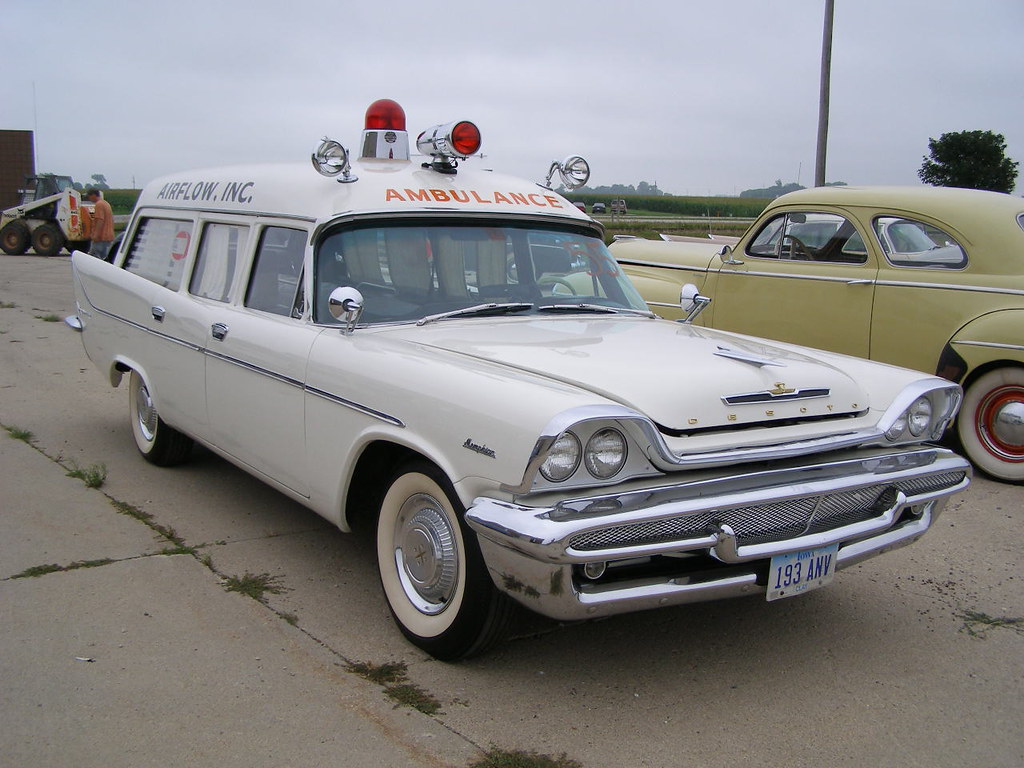
9. **DeSoto: Chrysler’s Mid-Level Star**
When Chrysler launched DeSoto in 1928, its intention was clear: to fill a crucial gap in its market offerings. Positioned as a mid-range brand, DeSoto aimed to appeal to buyers desiring a vehicle more refined and distinctive than a Dodge, yet not quite as opulent or expensive as a full-fledged Chrysler. Named after the Spanish explorer Hernando de Soto, the brand subtly invoked a sense of adventure and progress that resonated with the American public.
DeSoto cars quickly became known for their unique aesthetic, often featuring distinctive grilles that set them apart on the road. Beyond styling, the brand also incorporated innovative engineering, presenting a touch of class and advanced features without demanding a premium price tag. This blend of accessible luxury and thoughtful design allowed DeSoto to carve out a strong identity within Chrysler’s expanding portfolio during the challenging economic times of the 1930s and 1940s.
However, despite its initial success, DeSoto’s market position grew increasingly precarious by the 1950s. Intense internal competition from Plymouth and Chrysler models, which began to overlap in price and features, gradually squeezed DeSoto out of relevance. The brand was regretfully discontinued in 1961, bringing an end to its relatively short but impactful run. Nevertheless, DeSoto left behind a collection of truly stunning vehicles, such as the Adventurer, which continue to be celebrated as epitomes of mid-century American design and engineering.
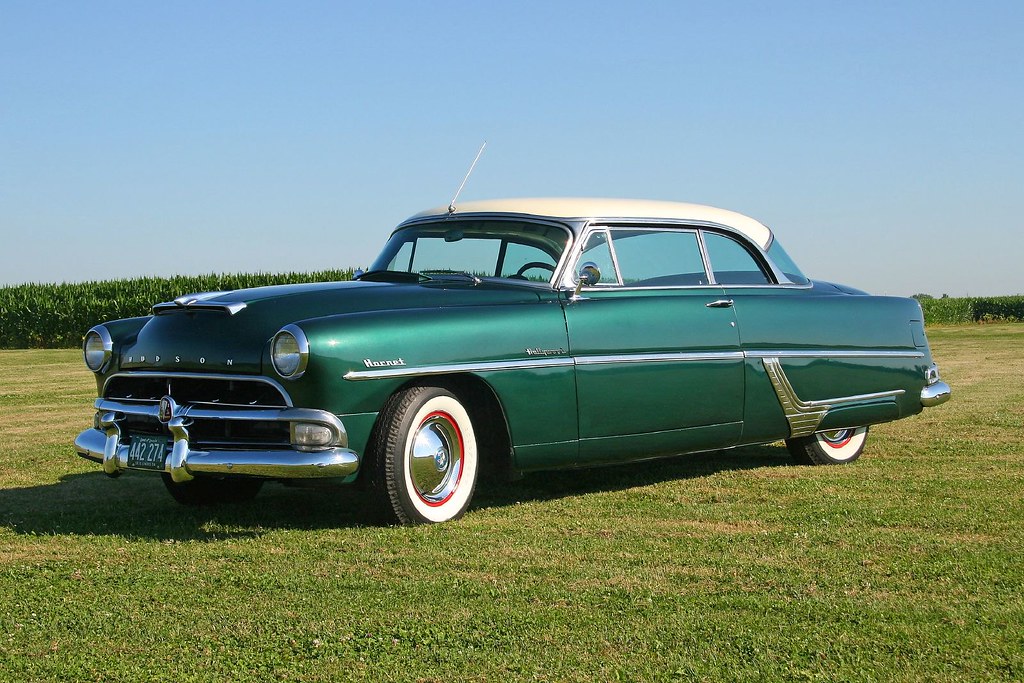
10. **Hudson: Ahead of Its Time**
Founded in 1909, the Hudson Motor Car Company may have been a smaller player in the burgeoning automotive industry, but it consistently demonstrated a capacity for big ideas and groundbreaking innovations. From its earliest days, Hudson made headlines by introducing advancements that often preceded wider industry adoption, earning it a reputation as a forward-thinking manufacturer.
One of Hudson’s most significant contributions came in 1916 with the introduction of the “Super Six” engine, which set new benchmarks for power and efficiency, outperforming many of its contemporaries. Beyond mechanical prowess, Hudson also led the way in passenger comfort and practicality, becoming one of the first automakers to offer a fully enclosed passenger cabin. This was a revolutionary convenience in an era where most cars were still open to the elements, fundamentally changing the driving experience for consumers.
The 1948 Hudson Hornet stands as perhaps the company’s most famous and enduring model, largely due to its revolutionary “step-down” design. This innovative construction method lowered the vehicle’s center of gravity, which dramatically improved handling and safety—concepts that were decades ahead of their widespread implementation. Despite its pioneering spirit, Hudson ultimately couldn’t sustain its independence against the massive scale of the “Big Three” and merged with Nash to form AMC in 1954. Yet, Hudson’s legacy persists, influencing modern car design and forever etched into racing lore.

11. **Nash: The Compact Car Pioneer**
Often overlooked in the broader narrative of American automotive history, Nash Motors, founded in 1916, was a true trailblazer in its own right. The company distinguished itself by being among the first to produce affordable, mass-market vehicles that incorporated advanced features typically reserved for higher-end models. This commitment to bringing innovation to the average consumer solidified Nash’s unique position in the industry.
Among Nash’s notable advancements was the pioneering inclusion of in-car heating and air conditioning, amenities that dramatically improved comfort and usability in varying climates. Furthermore, the Nash 600, introduced in 1941, made history as the first car in America to feature a unibody construction. This engineering feat resulted in a lighter and more fuel-efficient vehicle, showcasing Nash’s dedication to both practicality and technological progress long before these concepts became mainstream.
In the 1950s, Nash continued its leadership by championing compact cars, notably with the popular Nash Rambler. These models were a direct response to rising fuel prices and evolving consumer needs, offering a compelling blend of practicality and efficiency without compromising on style. Though Nash eventually merged with Hudson to form AMC, its profound contributions to automotive innovation, particularly in the realm of compact cars and advanced structural design, remain significant and continue to inspire modern manufacturers.
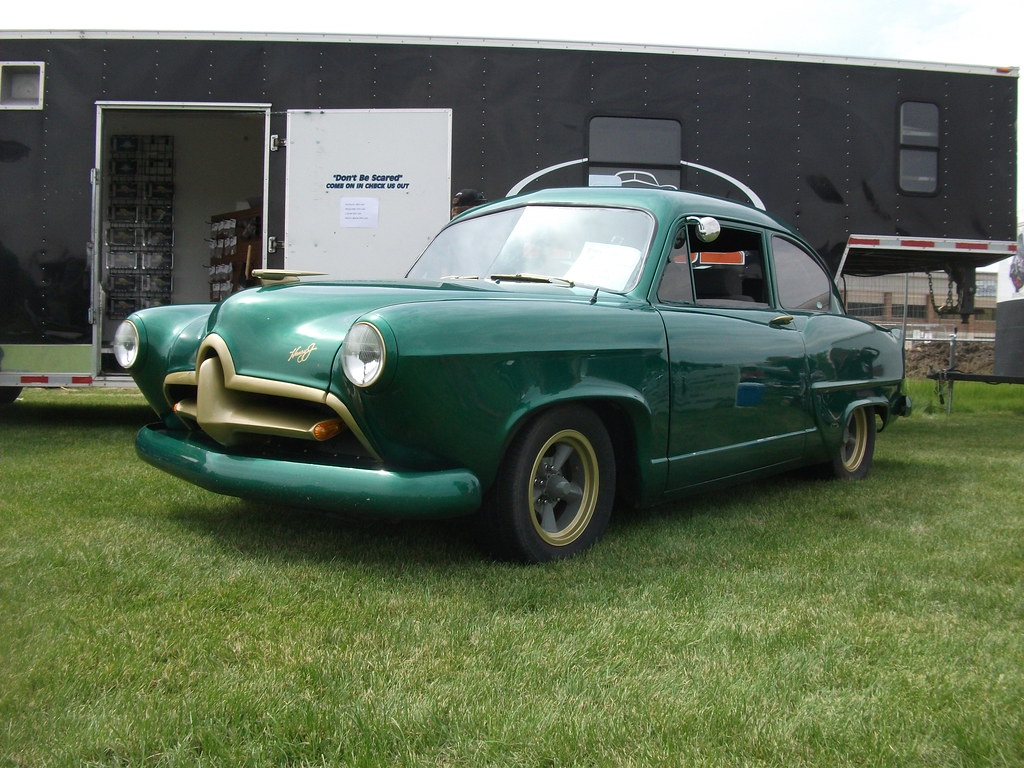
12. **Kaiser-Frazer: Post-War Dreamers**
Emerging in the optimistic aftermath of World War II, Kaiser-Frazer represented a bold new chapter in American automotive ambition. Founded by the industrialist Henry J. Kaiser and seasoned auto executive Joseph Frazer, the company was poised to capitalize on the booming demand for civilian vehicles. Their vision was to revolutionize the industry, not by traditional means, but by introducing fresh, modern designs and applying contemporary production techniques that promised efficiency and innovation.
The Kaiser Manhattan and Frazer Standard were testaments to this forward-thinking approach. These vehicles quickly garnered a loyal following, celebrated for their robust construction, reliable performance, and distinctive style that set them apart from the more conventional offerings of the era. Kaiser-Frazer was not just about aesthetics; it also championed safety, impressively introducing the first mass-produced car in America with factory-installed seatbelts in 1950, years before such features became standard practice across the industry.
Despite their early successes and innovative spirit, Kaiser-Frazer struggled to compete effectively with the immense scale and entrenched market positions of the larger, established automakers. By the mid-1950s, the company made a strategic pivot, exiting the U.S. passenger car market to focus primarily on Jeep production. Although its lifespan as a full-line automaker was relatively short, Kaiser-Frazer’s impact on design, safety, and post-war innovation demonstrated the potential for new entrants to challenge the status quo, leaving an undeniable, if brief, legacy.

13. **Tucker: The Car of the Future**
Preston Tucker’s audacious dream was to create an automobile that was nothing short of revolutionary, a vehicle so advanced it would be decades ahead of its time. In 1948, this dream materialized with the unveiling of the Tucker 48, famously nicknamed the “Torpedo,” a car that promised to redefine automotive engineering and safety standards. This remarkable vehicle was packed with groundbreaking innovations designed to protect occupants and enhance performance.
The Tucker 48 featured a distinctive rear-mounted engine, offering a unique weight distribution and driving dynamic. It also boasted disc brakes, a highly advanced feature for its era, and a shatterproof windshield engineered to pop out in the event of a collision, significantly reducing injury risk. These safety features were truly revolutionary, demonstrating a profound commitment to occupant protection long before it became a primary concern for the wider automotive industry.
Despite its visionary design and unparalleled safety innovations, Tucker’s ambitious plans were tragically cut short. Only 51 cars were ultimately built. The company faced a barrage of legal and financial troubles, compounded by significant resistance from established automakers who viewed Tucker as a disruptive newcomer. The company was forced to close, leaving the Tucker 48 as an enduring symbol of what could have been—a poignant reminder of how bold, transformative ideas sometimes struggle against entrenched systems, yet continue to inspire enthusiasts and designers to this day.
Read more about: Beyond the Mainstream: 15 Wild Classic Car Features Automakers Left in the Dust and Why You Won’t See Them Again

14. **Cord: Front-Wheel Drive Pioneer**
Cord was an American automotive brand synonymous with innovation and a daring willingness to challenge the industry norm. Founded in 1929 by Errett Lobban Cord, the company quickly distinguished itself by embracing radical engineering solutions that set its vehicles apart from the conventional designs of its time. Cord’s commitment to pushing technological boundaries made it a truly unique presence in the automotive landscape.
One of Cord’s most significant contributions was the introduction of the L-29, which proudly holds the distinction of being the first American front-wheel-drive car. This groundbreaking layout offered superior handling characteristics and enhanced performance, providing a driving experience that was notably different and often more stable than its rear-wheel-drive contemporaries. The L-29 was a bold statement that underscored Cord’s confidence in new engineering principles.
The brand’s innovative spirit reached its zenith with the Cord 810/812 series, introduced in the mid-1930s. These models became instant icons of Art Deco design, celebrated for their distinct hidden headlights—a novel feature—and their incredibly streamlined, elegant bodies. The 810/812 not only offered advanced mechanics but also presented a sophisticated aesthetic that captured the imagination of the public. Despite its groundbreaking technology and visionary design, Cord struggled financially, ultimately ceasing production in 1937. However, its profound influence, particularly in popularizing the front-wheel-drive layout, can be seen in countless modern vehicles, cementing Cord’s legacy as a true pioneer.
In reflecting on these incredible American automotive pioneers, from the very first motor wagons to the audacious designs of later innovators, one thing becomes abundantly clear: the spirit of ingenuity and relentless progress has been the driving force of this industry from its inception. Each brand, whether it endured for over a century or burned brightly for a fleeting few years, contributed a vital chapter to the larger story. They taught us about mass production, luxury, safety, efficiency, and patriotic identity.
Read more about: The Ultimate Guide: 14 Cars Proven to Surpass 300,000 Miles Without Major Repairs
The narrative of American car brands is not just one of machines and mechanics, but of human ambition, resilience, and an unwavering belief in the power of innovation to shape our world. As we look back, we appreciate not only the vehicles themselves but the visionary minds who dared to dream of a faster, safer, and more accessible future on four wheels. Their legacy continues to drive us forward, reminding us that the road ahead is always full of new possibilities, fueled by the same pioneering spirit that started it all. Always remember, every drive is a testament to this incredible history.

